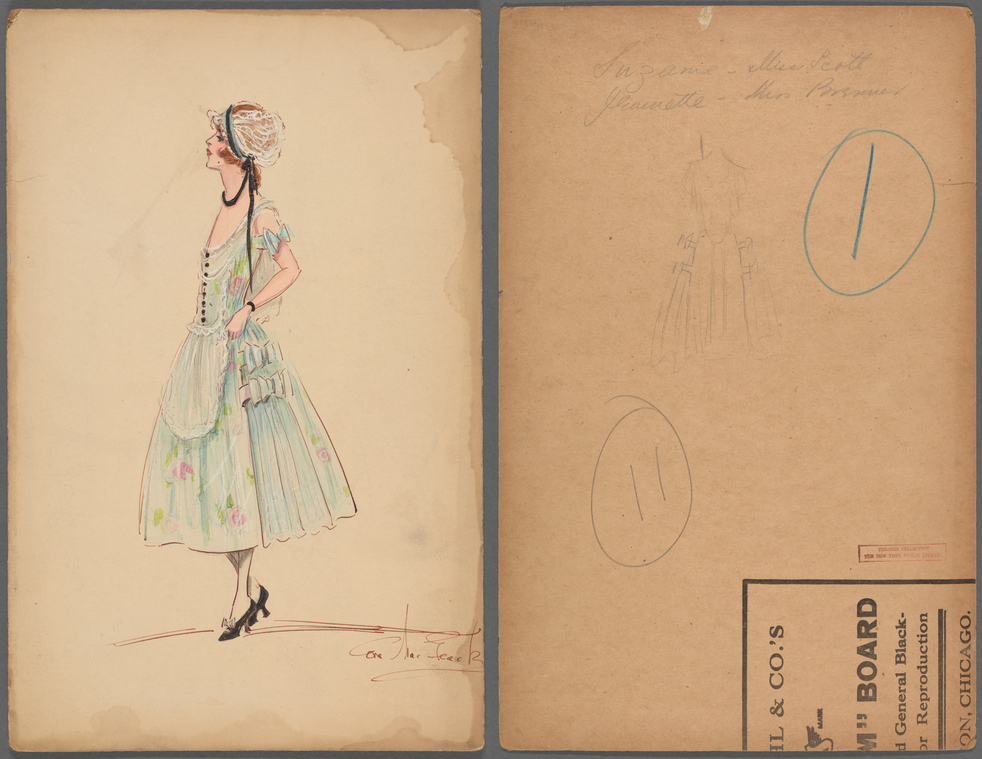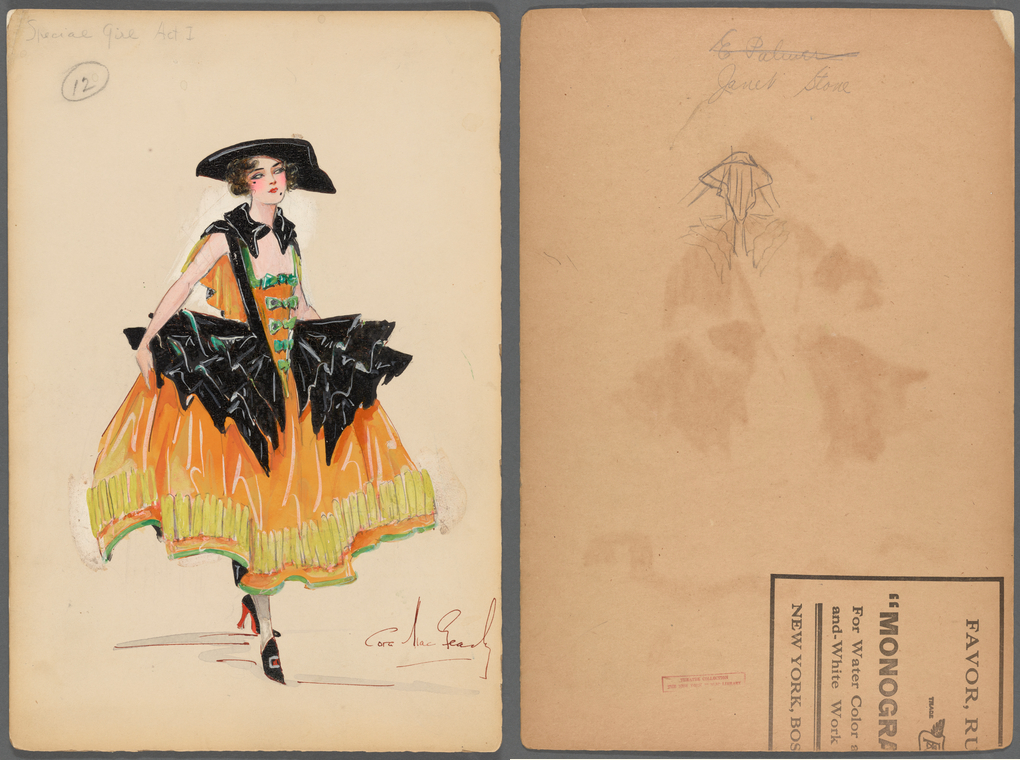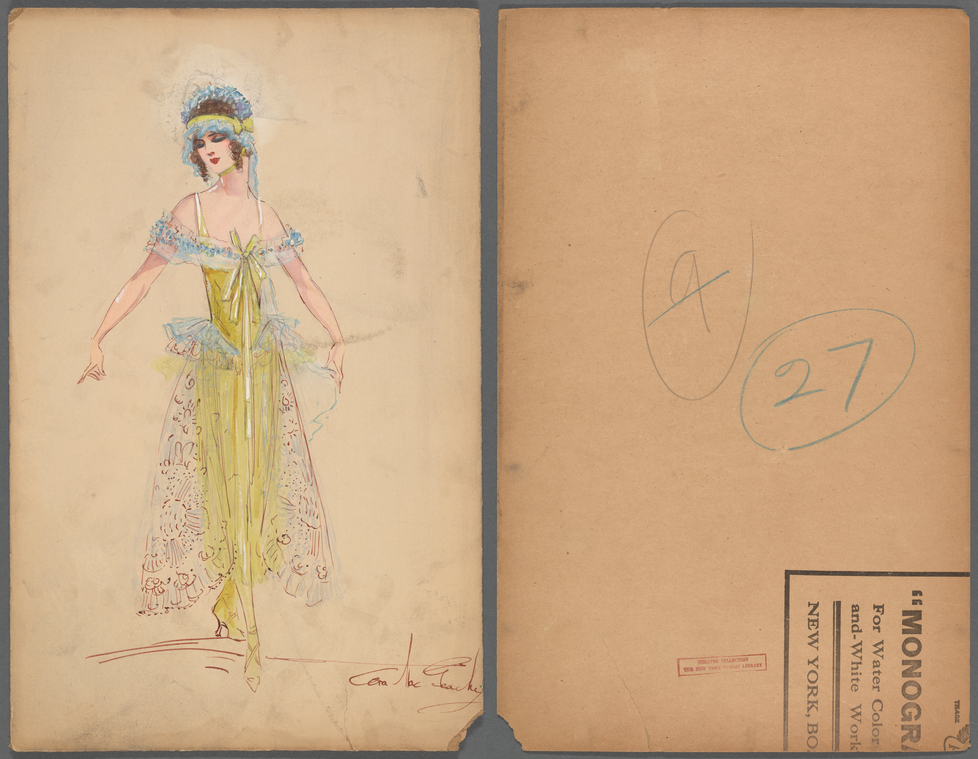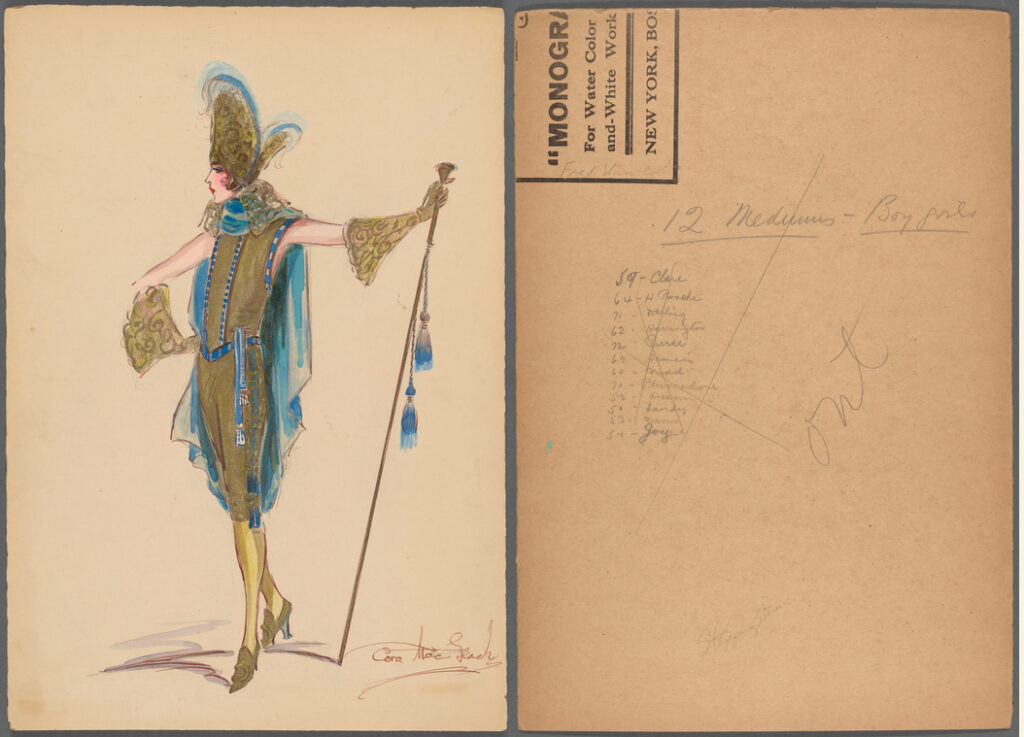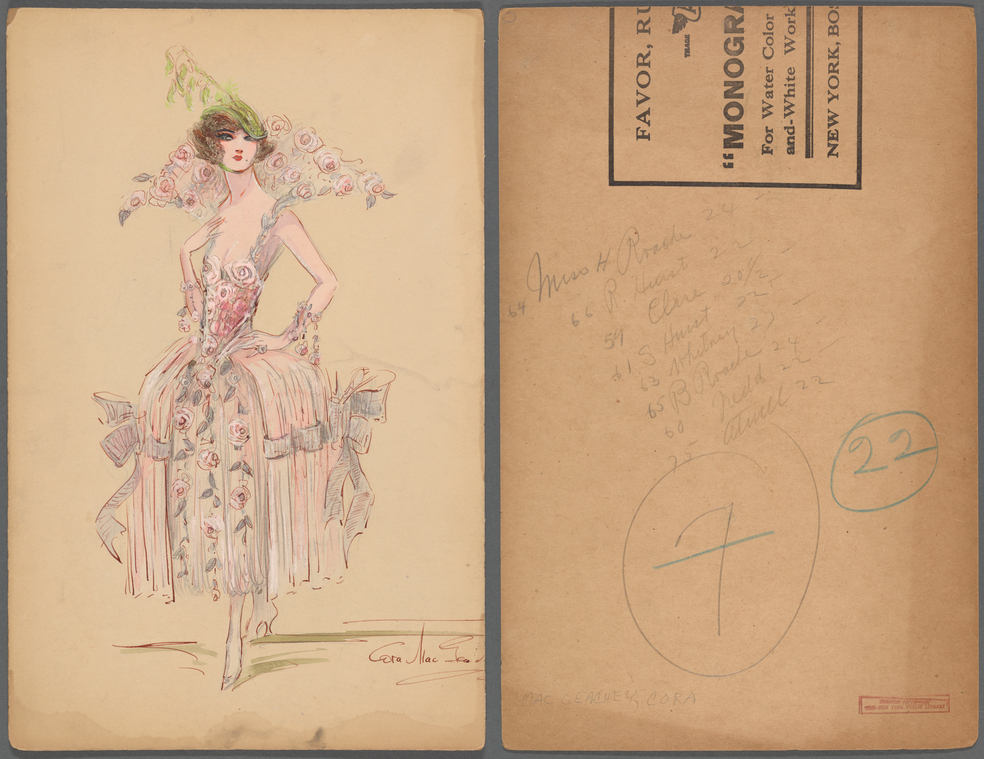Favor, Ruhl & Co. "MONOGRAM" BOARD
To the left is the stamp on the back of the Morée painting.
It is the older of the two styles. The differences are subtle,
but easily recognizable. This stamp is 1922 and earlier.
The older style has less space between the cities and is
justified with the rule above it. (same width as the rule)
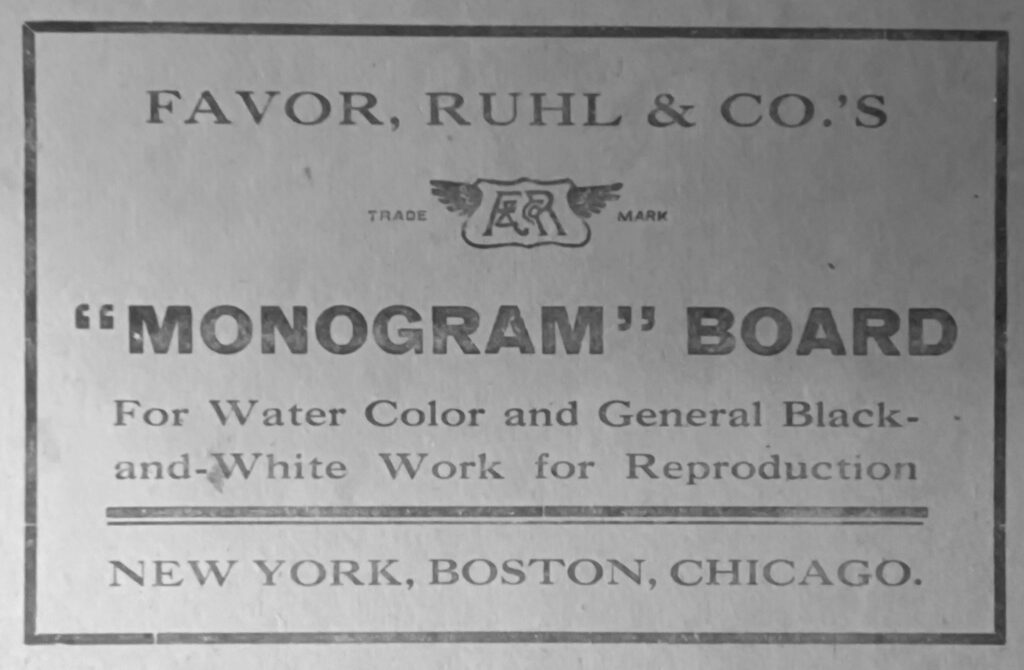
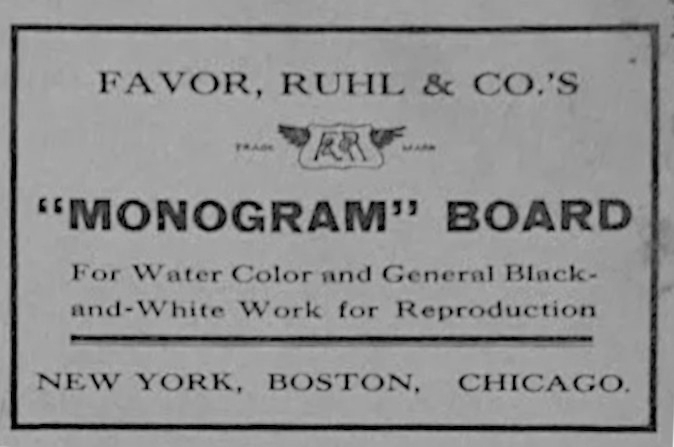
The Stamp on the right is the newer style.
The difference presents itself in the list of cities.
The newer stamp (right) has extra spaces between the cities.
Also the newer style has the cities extending beyond the
rule above it. (wider than the rule)
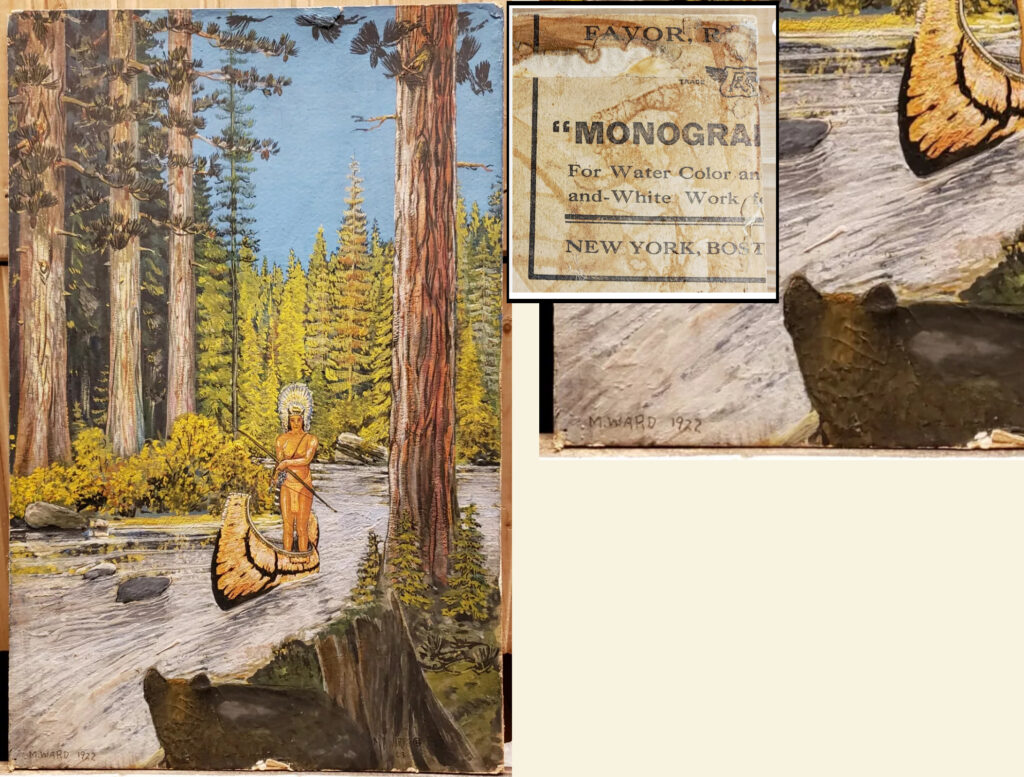
As of now, this painting represents the only dated artwork we that have found executed on a Favor, Ruhl & Co. board
with the older stamp style.The ones listed below are not dated, but the dates can
be inferred by the names of the performers and their known appearances.
Dated Drawings on Favor, Ruhl Board Narrow the Timeline for Morée
Eight theatrical costume sketches, each executed on Favor, Ruhl & Co.’s “Monogram” illustration board, provide powerful new evidence for dating the enigmatic painting Morée. Each drawing features a stamped board that matches exactly the one found on Morée, down to the wording, typeface, and spacing. Until now, the earliest confirmed example of this exact stamp style came from a dated 1922 illustration. These newly surfaced drawings move that window decisively backward to as early as 1916.
The dating of the drawings is made possible by handwritten inscriptions on their reverse sides. These inscriptions list performer names associated with the Ziegfeld Follies and other New York theatrical revues of the 1910s and early 1920s. Among the clearest names are:
Edith Whitney — confirmed in Ziegfeld Follies of 1915
Katherine Brady — appeared in Ziegfeld Follies of 1918
Jay Brennan — listed in Follies of 1918 programs
Additional names include Ms. Glen, Ms. Scott, H. Roache, R. Hurst, S. Hurst, Whitney, B. Roache, Judd, Atwell, Stanley, Royce, Jerome, Anderson, Darling, Harrington, Pierce, Francis, Dunn, Landy, Davis, and Joyce. These individuals represent a cross-section of chorus and feature performers working across productions dated roughly 1916 to 1921.
The strongest impact of these findings is their material link to Morée. The presence of the identical Favor, Ruhl & Co. “Monogram” Board stamp on these stage-related drawings demonstrates that this specific board was in professional use as early as 1916. Because Morée uses that same exact board, it can now be securely placed within that production timeline. This shifts the possible creation date of Morée years earlier than previously confirmed.
The combined evidence—performance rosters, corroborated names, material matches, and period style—indicates that Morée was likely created sometime between about 1916 and 1922 and very likely as early as 1916 or 1917. This directly aligns with the critical years of New York Dada and the moment Picabia painted Jeanne Marie Bourgeois.
By pairing these newly identified costume drawings with their labeled backs and matching them to known theatrical timelines, we now have a firm lower bound for the use of this specific Favor, Ruhl board.
